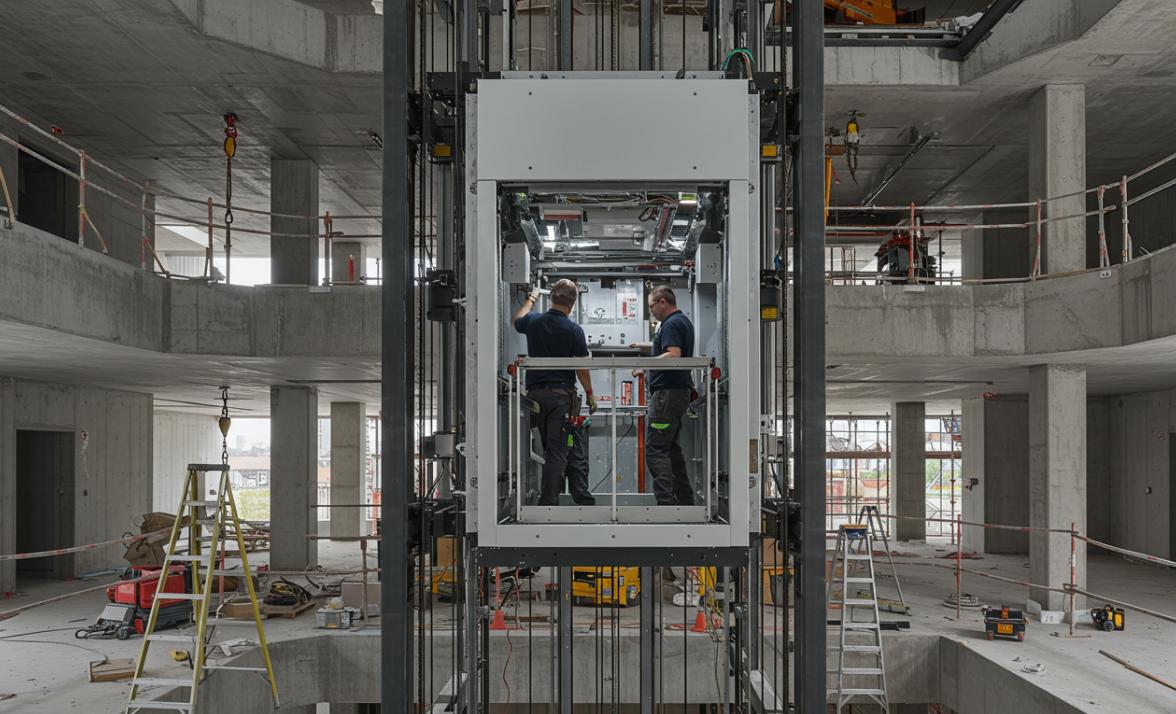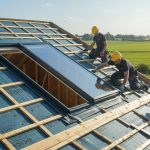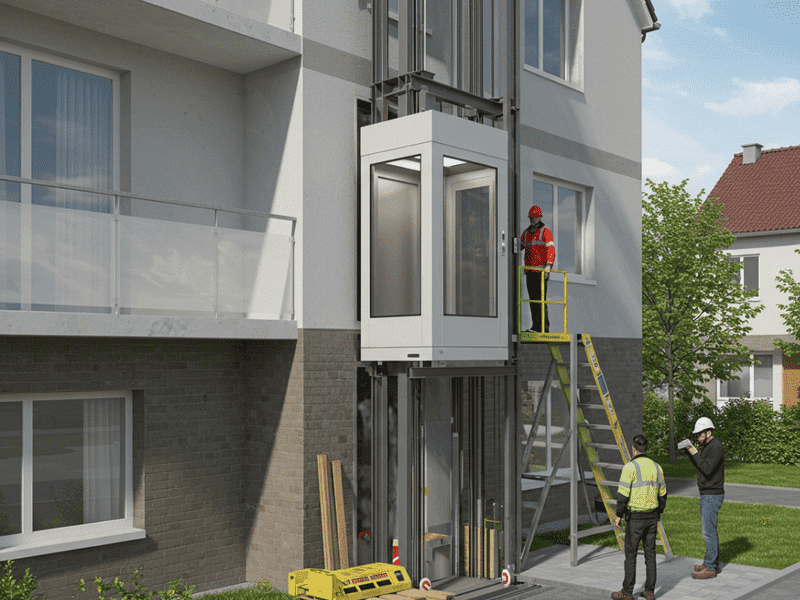
Installing a private elevator is a strategic decision that can transform the accessibility of your home. In 2025, the regulations governing this installation are evolving, making it essential to fully understand the costs and requirements. From the limited travel speed of private elevators to the strict standards for elevators, this article guides you through each step to ensure a successful and safe installation.
Different types of private elevators
Before diving into the installation process and associated costs, it is vital to understand the different private elevator options available on the market.
Traditional elevators
Traditional elevators, often installed in newer buildings, offer high capacity and fast operation. However, their installation can be complex and require significant masonry work.
Hydraulic elevators
Hydraulic elevators use a piston and fluid-driven system to move the cab. They offer a smooth, quiet ride and are ideal for homes with multiple floors. However, they require a machine room and more space for installation.
Traction elevators
Traction elevators use ropes and counterweights, often without a machine room. They are more energy-efficient than hydraulic models and suitable for tight spaces. Their smooth operation and modern feel make them a popular choice in residential settings.
Pneumatic vacuum elevators
These elevators use air pressure to move a transparent cab between floors. Compact and stylish, they don’t need a shaft or machine room. Ideal for existing homes, they offer quick installation with minimal construction work.
Chain-driven elevators
Chain-driven elevators are durable and low-maintenance. They operate with a chain instead of cables, providing a reliable and cost-effective alternative for home use.
Winding drum elevators
Using a motor and drum to wind a cable, these elevators are compact but less smooth than others. They work well for basic accessibility requires on a budget.
Panoramic elevators
For a touch of modernity, panoramic elevators offer an outdoor view thanks to their glass structure. While attractive, their installation can be more expensive due to the complexity of construction.
Installation costs of a private elevator
The installation costs of a private elevator vary depending on several factors. Let’s analyze these elements to better understand the financial implications of your project.
Factors influencing the cost
-
Complexity of installation: The need for significant masonry work for the creation of the shaft or complex electrical adaptations for power supply and safety can significantly increase the total installation price. It is crucial to assess the existing structure of the building to anticipate these additional costs.
-
Number of floors: The cost of the elevator increases proportionally to the number of floors to be served, as this affects the length of the rails, the power of the motor, the amount of wiring, and the safety devices required for each additional level.
-
Type of elevator: Traditional traction elevators, with machinery and counterweights, generally involve higher installation costs due to their mechanical complexity and specific structural requirements, unlike hydraulic or screw-driven private lifts, which are often more compact and less expensive to install.
Here is a clear and informative comparative table summarizing the estimated installation costs and load capacities for different types of private elevators :
|
Type of Elevator |
Estimated Cost (euros) |
Load Capacity (kg) |
|---|---|---|
|
Traditional elevator |
25,000 – 50,000 |
300 – 500 |
|
Hydraulic elevator |
18,000 – 40,000 |
250 – 450 |
|
Traction elevator |
20,000 – 45,000 |
250 – 400 |
|
Pneumatic vacuum elevator |
30,000 – 55,000 |
200 – 240 |
|
Chain-driven elevator |
15,000 – 30,000 |
200 – 300 |
|
Winding drum elevator |
12,000 – 25,000 |
200 – 250 |
|
Panoramic elevator |
35,000 – 60,000 |
250 – 400 |
Note: Prices may vary based on custom finishes, number of stops, regional regulations, and required construction work.
Regulations to consider
Before undertaking the installation of your private elevator, it is imperative to familiarize yourself with the regulations in force.
Safety and construction standards
Elevators must comply with strict standards to ensure user safety. This device must be equipped with an alarm button and an emergency stop system to guarantee safe operation.
Maintenance log
Regulations also require a precise maintenance log. This includes regular maintenance visits to verify the conformity and safety of the equipment, generally every six months for traditional elevators.
Local considerations
It is advisable to consult your local council or the relevant authorities to understand local specificities. Some areas may have different regulations regarding the installation of elevators.
Available aid and subsidies
To alleviate the cost of installing a private lift, various financial aids may be available.
-
Tax credit: A tax credit, which can reach up to 25% of eligible expenses within specific limits, is often available for the installation of equipment promoting home care for the elderly or disabled. It is important to verify the eligibility conditions and the applicable limits at the time of installation.
-
Government subsidies: At the regional or local level, specific subsidies may be granted by territorial authorities or organizations such as the National Housing Agency to improve the accessibility of housing for the elderly or people with reduced mobility. These aids are typically subject to income conditions and the nature of the work carried out.
-
Reduced VAT rate: The installation of a private elevator in a property over two years old may benefit from a reduced VAT rate of 5.5% instead of the normal rate of 20%, under certain conditions. This reduction generally applies when the work is carried out by a professional and aims to improve the accessibility and adaptation of the dwelling for a disabled person or an elderly person losing autonomy.
Installing a private elevator can prove to be a significant investment. However, good preparation and consideration of all regulatory and financial aspects will help you carry out this project successfully.
To maximize the success of your private elevator installation project, call in a professional who will be able to carry out a personalized study of your property. They will also help you establish a clear budget while respecting the planned deadlines.












